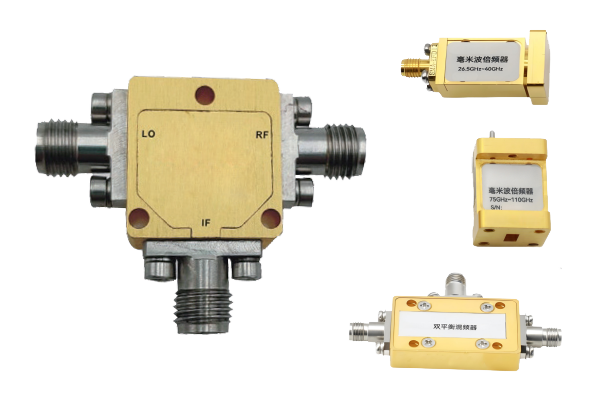
Pin diode components are considered indispensable in advanced RF applications because of their core operational properties Their quick conductive to nonconductive switching and compact capacitance with limited insertion loss make them perfect for switches modulators and attenuators. The primary process that governs PIN diode switching is the modulation of current by varying the applied bias. Applying bias shifts the depletion-region extent within the p–n junction and so modifies conductivity. Setting different bias levels allows PIN diodes to perform high-frequency switching with minimal distortion
In systems that require precise timing and control PIN diodes are commonly integrated into sophisticated circuit topologies They are useful in RF filtering systems for choosing which frequency bands to pass or suppress. Moreover their high-power handling capability renders them suitable for use in amplification division and signal generation stages. The trend toward miniaturized highly efficient PIN diodes has broadened their applicability in modern technologies like wireless communications and radar
Evaluating Coaxial Switch Design and Functionality
Creating coaxial switches is a challenging task that demands consideration of a variety of technical parameters Switch performance is contingent on the kind of switch operational frequency and its insertion loss attributes. Optimal coaxial switches balance reduced insertion loss with enhanced isolation between connections
Performance assessment centers on return loss insertion loss and port isolation metrics. Such parameters are usually determined via simulations analytic models and physical experiments. Careful and accurate evaluation is vital to certify coaxial switch reliability in systems
- Analytical methods simulation packages and experimental testing are standard approaches to coaxial switch analysis
- Environmental temperature impedance mismatches and production tolerances can significantly influence switch characteristics
- Emerging developments and novel techniques in switch design concentrate on boosting performance while minimizing footprint and energy use
Optimizing LNA Designs for Performance
Optimization of LNA gain efficiency and overall performance is critical to achieve excellent signal preservation That involves meticulous transistor choice biasing arrangements and topology selection. Sound LNA architectures control noise contributions and support strong low-distortion amplification. Modeling and simulation tools enable assessment of how transistor choices and biasing alter noise performance. Striving for a minimal Noise Figure assesses success in retaining signal power while limiting noise contribution
- Selecting devices that exhibit low intrinsic noise is a primary consideration
- Setting proper and optimal bias parameters is necessary to suppress noise in active devices
- Circuit topology significantly influences overall noise performance
Tactics like impedance matching noise mitigation and feedback regulation advance LNA performance
PIN Diode Based RF Switching and Routing

PIN diode switching mechanisms deliver versatile and efficient RF path routing across designs They can be switched very fast to allow flexible dynamic routing of RF signals. PIN diodes’ low insertion loss and good isolation preserve signal quality through switching events. PIN diodes are used in antenna switch matrices duplexers and phased array RF systems
Switching depends on bias-induced resistance changes within the diode to route signals. The deactivated or off state forces a high resistance barrier that blocks RF signals. With forward bias the diode’s resistance diminishes permitting the RF signal to flow
- Moreover furthermore additionally PIN diode switches provide quick switching low energy use and small form factors
Different design configurations and network architectures of PIN diode switches provide flexible routing functions. By networking multiple switches designers can implement dynamic matrices that permit flexible path selections
Evaluation of Coaxial Microwave Switch Performance

Testing and assessment of coaxial microwave switches are crucial to ensure efficient operation within systems. Diverse factors including insertion reflection transmission loss isolation switching speed and frequency span impact performance. Thorough evaluation entails measurement of these parameters under diverse operational environmental and testing circumstances
- Furthermore the testing should cover reliability robustness durability and resistance to harsh environmental influences
- In the end the outcome of rigorous evaluation supplies essential valuable and critical information for switch selection design and optimization
LNA Noise Minimization Techniques A Detailed Review
LNA circuits are key elements in RF and wireless systems, amplifying faint signals while minimizing noise additions. The article delivers a wide-ranging examination analysis and overview of methods used to reduce noise in LNAs. We explore investigate and discuss principal noise contributors like thermal shot and flicker noise. We also cover noise matching feedback network techniques and ideal bias strategies to mitigate noise. The article highlights recent advances such as novel semiconductor materials and innovative circuit architectures that reduce noise figure. By providing insight into noise minimization principles and practices the review supports researchers and engineers working on high performance RF systems
PIN Diode Applications in High Speed Switches

They show unique remarkable and exceptional characteristics tailored for high speed switching uses Low capacitance and low resistance contribute to very fast switching enabling precise timing control in demanding applications. Additionally their linear response to applied voltage aids in accurate amplitude modulation and switching behavior. This versatility flexibility and adaptability makes them suitable applicable and appropriate for a wide range of high speed applications Applications span optical communication systems microwave circuits and signal processing hardware and devices
Integrated Circuit Coaxial Switch Circuit Switching Technology
Coaxial switch IC integration provides critical improvements in signal routing processing and handling inside electronic systems circuits and devices. The ICs are designed to direct manage and control coaxial signal flow offering high frequency operation and reduced propagation insertion latency. IC miniaturization supports compact efficient reliable and robust designs appropriate for dense interfacing integration and connectivity contexts
- By rigorously meticulously and carefully implementing these techniques practitioners can achieve LNAs with remarkable noise performance for sensitive reliable electronics By rigorously meticulously and carefully implementing these techniques practitioners can achieve LNAs with remarkable noise performance for sensitive reliable electronics By carefully meticulously and rigorously applying these approaches designers can realize LNAs with outstanding noise performance enabling sensitive reliable electronic systems By meticulously carefully and rigorously adopting these practices designers can deliver LNAs with excellent noise performance supporting reliable coaxial switch sensitive systems
- Applications of IC coaxial switch technology span telecommunications data communications and wireless networks
- These technologies find application in aerospace defense and industrial automation fields
- IC coaxial switching finds roles in consumer electronics audio visual equipment and test and measurement tools
Designing LNAs for Millimeter Wave Frequencies

Millimeter wave LNA design must address elevated signal attenuation and stronger effects of intrinsic noise. Parasitic capacitances and inductances become major factors at mmWave demanding careful layout and parts selection. Ensuring low input mismatch and strong power gain is critical essential and important for LNA operation at mmWave. Choosing appropriate active devices like HEMTs GaAs MESFETs or InP HBTs is key to achieving low noise at mmWave bands. Further the design implementation and optimization of matching networks remains vital to achieve efficient power transfer and proper impedance matching. Paying attention to package parasitics is necessary since they can degrade LNA performance at mmWave. Selecting low-loss transmission paths and optimal ground plane layouts is essential necessary and important for reducing reflection and preserving bandwidth
PIN Diode RF Switching Characterization and Modeling
PIN diodes exist as key components elements and parts in several RF switching applications. Comprehensive accurate and precise characterization of these devices is essential to enable design development and optimization of reliable high performance circuits. This includes analyzing evaluating and examining their electrical voltage and current characteristics like resistance impedance and conductance. Characterization also covers frequency response bandwidth tuning capabilities and switching speed latency or response time
Moreover additionally the crafting of accurate models simulations and representations for PIN diodes is essential crucial and vital for predicting RF behavior. Several diverse modeling approaches exist such as lumped element distributed element and SPICE models. Choosing the right model simulation or representation depends on specific detailed particular application requirements and desired required expected accuracy
High End Approaches for Low Noise Amplifier Design
Developing LNAs involves diligent consideration of circuit topology and components to obtain optimal noise performance. Recent advances in semiconductor tech have unlocked innovative groundbreaking sophisticated LNA design techniques that diminish noise greatly.
Among several numerous numerous these techniques are employing utilizing implementing wideband matching networks incorporating low noise transistors with high intrinsic gain and optimizing biasing scheme strategy approach. Furthermore advanced packaging and thermal control strategies play an essential role in lowering external noise contributions. By rigorously meticulously and carefully implementing these techniques practitioners can achieve LNAs with remarkable noise performance for sensitive reliable electronics
